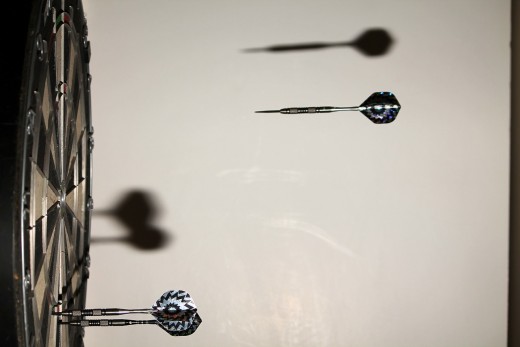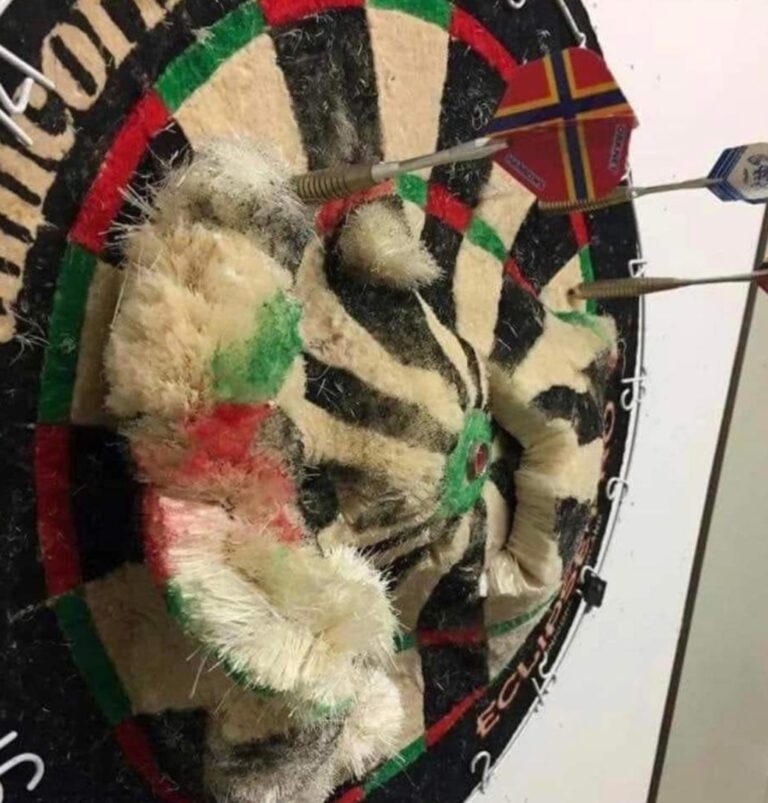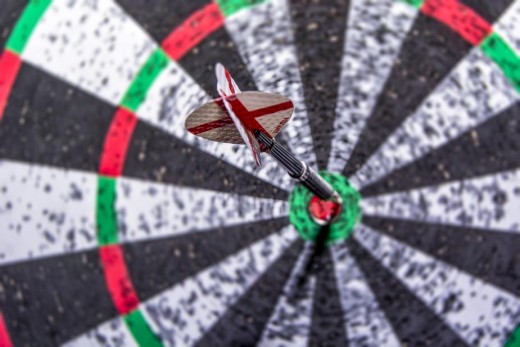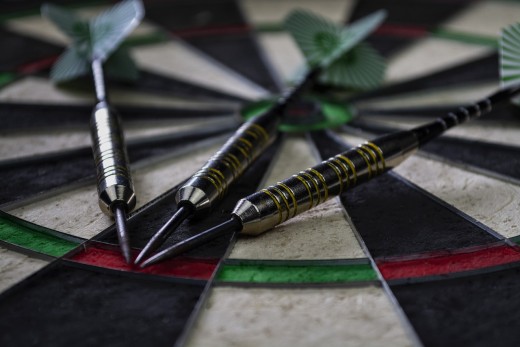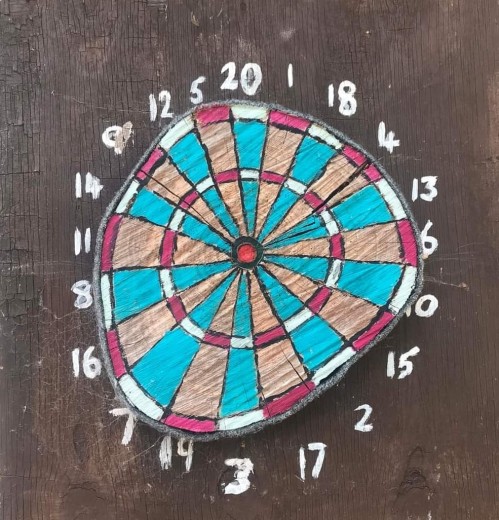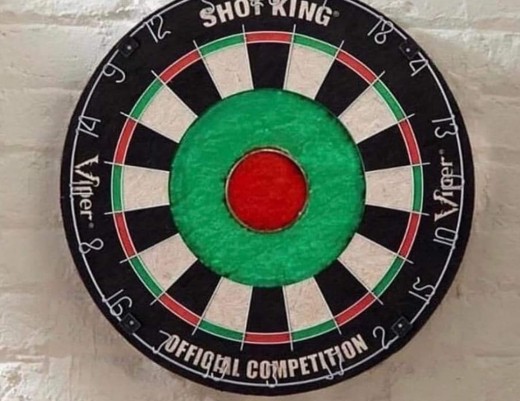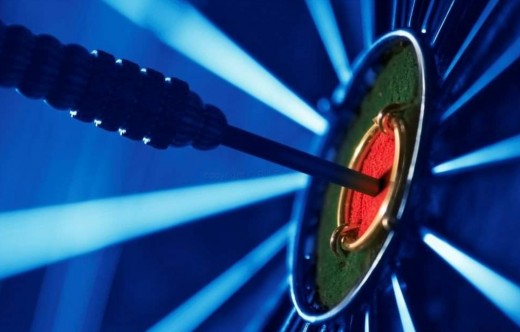July 1, 2002
Column 127
To the Point (kinda) about To The Point
When you rearrange the letters of a word or phrase to form another word or phrase the result is often quite amusing. Sometimes it provides deep insight into the text being anagrammed. For example, the letters in Virginia Bottomley’s name (a long-time Conservative member of British Parliament) can be rearranged to spell: I’m an evil Tory bigot. On Prince Edward Island in Canada, I once threw darts against Bottomley’s husband, Peter. Isn’t it interesting that the letters of Peter’s first name don’t need to be rearranged to be synonymous with the British term for something Bill Clinton should keep in his pants?
But this column isn’t about anagrams or British politicians or even ex-presidents whose wives should divorce their sorry asses. It’s about Missouri-author Dan William Peek’s popular new book, To The Point. The thing is: I just can’t help but find it curious that the letters in Peek’s name can be rearranged to spell: ape-like wild-man. I don’t know what this means. Maybe his wife, Joy Lynn, has an idea.
I met Dan and Joy Lynn at the Rae Chesney shoot last January. I was walkin’ along, mindin’ my own business when Dan appeared from behind a long table stacked with his shiny new books. I purchased the book right there, on the spot. No questions asked. Dan’s pitch about how it was packed full of photos of really hot darts babes “including some from Philadelphia” was all it took. I plunked down a crisp twenty and headed to the bar, flipping the pages as I walked.
Seated in the bar was an old friend from Virginia Beach, Chris Bender, doing what he always does at darts tournaments. Chris drives several hundred miles every weekend to enter shoots, throws a few rounds, gets knocked out, and then heads to the bar to watch hockey. To Chris, I guess this actually makes sense. I suppose it kind of does. I do pretty much the same thing, except for the hockey part, and seldom make it past the first round.
Anyway, in between pucks or slap shots or whatever it is hockey players do when they’re not sitting in a dentist’s chair, Chris and I admired the photos in To the Point. Packed between the some 300 pages of Peek’s Story of Darts in America are incredibly sexy shots of Helen Scheerbaum, Adele Nutter, Marilyn Popp, Julie Nicoll, Lori Verrier, Holly Boynton, Gloria Umberger and even Sandi Cain. For this reason alone all of America should buy the book. The pages are perforated so you can carefully detach the photos for your personal use. For example, in my wallet I now carry around the photo from page 260. That would be Sandi Cain.
So, I read the book while sitting on Sandi Cain. It’s a quick read and quite fascinating in many respects. Anybody interested in the history of our sport in THIS country would be remiss if they didn’t pick up a copy of To the Point. It’s published by Pebble Publishing out of Colombia, Missouri and available now pretty much anywhere books are sold.
The history of darts in America is a colorful story. If you’ve been around the sport for any reasonable period of time you have no doubt heard the legend about how darts was brought to this country in 1620, on the Mayflower, by the Pilgrims and the British Darts Organization’s (BDO), Olly Croft. Well, guess what? Thanks to years of extensive research by Peek this tale has now been exposed as the myth it always was. We now know that even though Croft was on the Mayflower, darts were not.
We now know that the first dart in America was actually made by Randy Holmes of Ft. Lauderdale from a twig and a sharp little rock that he found somewhere in the Everglades. Nah. I only jest. What Peek discovered is what everybody in Philadelphia already knew. That is that Allan Iverson is a mental case.
Seriously, what Philadelphians know (and will not hesitate to tell you) is that their city is the center of the universe. Betsy Ross made the flag here. Edgar Allan Poe did drugs and wrote some books here. The Liberty Bell (originally cast in England) which rang to beckon Philadelphians to the State House (now Independence Hall) to hear the first reading of the Declaration of Independence is here. In fact, it is in this very redbrick building that delegates to the Second Continental Congress united in anger in 1776 when British troops fired on the citizens of Concord, Massachusetts. Those nasty blighters.
So it only stands to reason that darts also began where our nation began. That’s what they’ll tell you in Philly while they’re stuffing cheese steaks into the exhaust pipe of your car.
The thing is: this is not exactly what Peek reports.
What Peek determines is that “American darts” started in and around Philadelphia. American darts isn’t quite the same thing as good old fashioned steel-tip or even electronic darts. American darts is played on a wooden board with wooden darts called “widdies.”. Everybody shares the same set of darts. Shooters sometimes stick the points of the darts into a potato between throws so that the darts will stick in the board on their next trip to the line. In years gone by it was not uncommon for a player to gobble up an opponent’s personal potato to gain an advantage in a game.
Basically baseball without balls, American darts is strictly an American invention. The main competition follows the format of a nine-inning baseball game. Focused on numbers one through nine, players take turns attempting to score points by sticking the double and triple rings which, on an American darts board, are both located around the perimeter of the board. The first “inning” is played on the number one pie, the second inning on the number two pie and so forth. The maximum number of points or “runs” that can be scored per trip to the line is nine (three triples). Eighty-one runs, or 27 consecutive triples, is the maximum score achievable.
In the history of the world, or at least since Olly Croft sailed over on the Mayflower, no one has ever achieved a perfect score in American darts. However, some of the best darters this country has ever produced, including Jerry Umberger, were weaned on American darts. If there’s a lesson buried in Peek’s research, beyond the historical, it’s surely that one has to practice doubles to hit them when they count. It should come as no surprise that among today’s top steel-tippers are a host of shooters, like Mike Abboud, John Kuczynski, Darin Young and Tommy Hill, who compete regularly on the American darts circuit.
While American darts seems to have been the forerunner to the steel-tip game in this country, Peek finds that something called “Dartball” may have been the forerunner to even American darts. Played primarily in areas of the Midwest (notably Kansas City and Milwaukee) and also predicated on the game of baseball, albeit much more closely than American darts, Dartball requires the player to throw, generally underhanded, a soft-wood torpedo-length dart from a distance of something like 20 feet or more at a board resembling a typical baseball diamond. It’s not easy. I once threw a Dartball dart at Rick Osgood’s shop down in Houston. I missed the board completely and chipped a light on one of his electronic scoring machines. I’ve also done this throwing steel-tip.
Peek takes us along for the ride as he follows a team from South Boston’s Sports Connection Bar and Grill for Minuteman Dart League (MMDL) play. He takes us to have coffee with Eddie Doyle, who was a bartender at the Boston’s Bull & Finch, of “Cheers” fame — and who, some say, was the real life Sam Malone played by Ted Danson in the television sitcom. We learn that the Bull & Finch was once the center of darts league action in Boston and that the producers of Cheers knew this. We are left contemplating what an extraordinary opportunity was missed for our sport when the screenwriting decision was made to not include darts league play as a thread in the series.
Peek introduces us to some of the great names — among so many great names — that dot the history of darts in America. Many, like Ray “Tex” Blackwood, Danny Valletto, Ray Fisher, and the late Al “the Iceman” Lippman did, indeed, hail from Philadelphia. These are the personalities (along with Bob Theide and Conrad Daniels from South Jersey) who set the standard for today’s great Philly darters, led for the past several years by the extraordinarily talented, five-times “Mr. Philadelphia, Bill Davis.
But just as darts was transitioning from widdies to steel-tip in Philadelphia in the late 1960’s and exploding in popularity in the early 1970’s, it was bubbling up in a major way in other parts of the country. The Philly greats may have topped the list of names to beat but they were by no means the only names in the game. Peek lists many, many others – far too many to list here.
Still, from various quarters, Peek has been criticized for focusing his study too much on the Northeast and therefore, slighting history in other parts of the country. Fair criticism or not, Peek seems to see his chronicle as a work in progress. He plans a second edition in 2005.
Peek introduces us to the promoters, from Bob McLeod to Paul Hong to Tom Fleetwood to Glenn Remick. He chronicles the darts manufacturers from Widdy and Apex to Arachnid. He recalls the old darts publications like International Spider and Cork. He relies extensively on interviews and an arduous review of the literature, including old articles from Time, Life and even the Wall Street Journal to reconstruct the history of the sport in America.
What Peek seems to ponder and explore most aggressively — from every angle at his disposal — is the tantalizing question: what exactly was it that acted as the catalyst for the transition of the game in this country from Dartball or American darts to good old fashioned British steel-tip?
He lays solid groundwork for the claim that, because of the tradition of American darts in the Philadelphia area, Philadelphia was simply ripe — more ripe, at least, than any other area of the country — for British darts to take hold there first. However, Peek himself seems to still be uncertain about the answer as to exactly why this occurred. Perhaps the sport was motivated by the influx of British and Irish émigrés? Perhaps the boon was prompted by American servicemen returning from pubs overseas? Perhaps it was just a bit of both?
Along the path to discovery Peek riddles us with the kind of curiosities that make any history lesson interesting:
We learn that Dave Kelly once took on Celtics basketball player, Larry Bird, and pretty much demonstrated that, compared to knocking down doubles, tossing in free throws ain’t a very big deal.
We learn that coal-cracker flights were first made just for Jerry Umberger.
We learn that there are actually two dartboards at the Smithsonian Museum and one of them is the British board that was mounted to the inside door of the “Swamp” on the television sitcom, MASH.
What Peek does not report (and what many Philadelphians and I guess, the Smithsonian, may have also missed) is that there was a second dart board visible in many MASH episodes. It was hung in Henry Blake’s office — and it was an American dart board.
The sum of Peek’s research into the history of darts in America is a story — an education — that’s more than worth the twenty bucks and the time it takes to flip the pages. I highly recommend To the Point to anyone involved in our sport, not only because it’s a damn good read but also because you, too, will be able to experience the pleasure of sitting on Sandi Cain.
From the Field,
Dartoid

